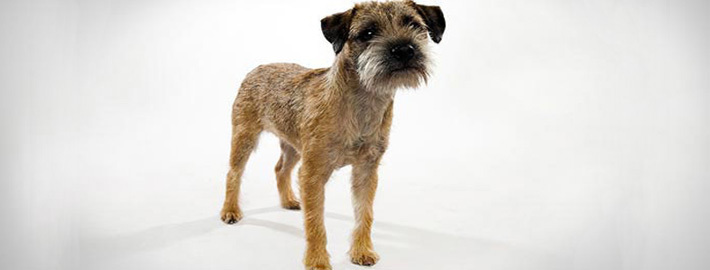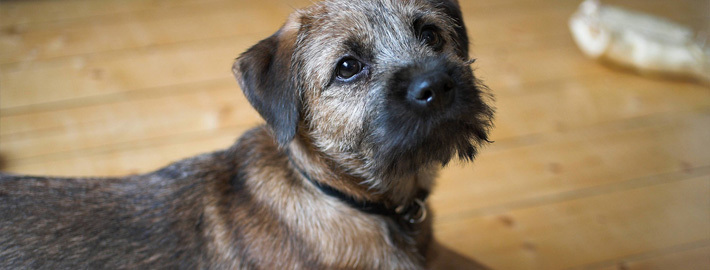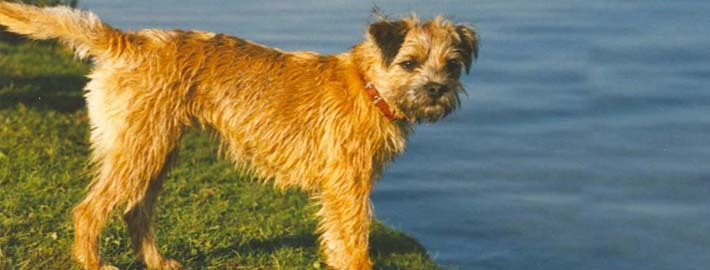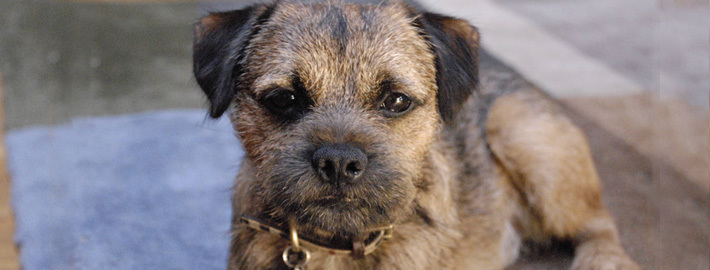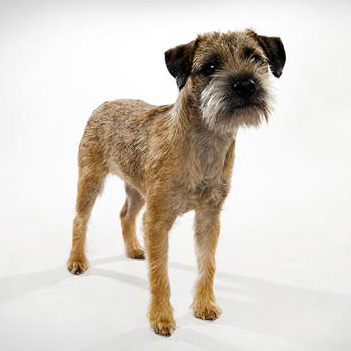What makes the Border Terrier Unique?
This alert, good-natured dog was originally bred to assist in foxhunts, driving foxes out of their hiding places and out into the open for the hounds to chase. He still has a powerful drive to hunt and dig, as well as the energy level that enabled him to keep up with hunters on horseback. These traits can make him an aggravating pet for some owners; for others, Border Terriers are wonderful companions who play hard and love harder.
Breed Groups
Page Contents
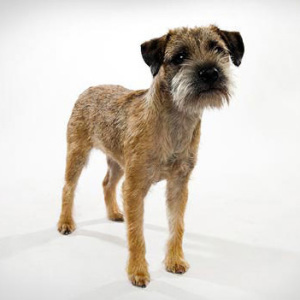
SnapShot
| Size: | Males – 48 to 56 cm (19 to 22 inches) Females – 46 to 53 cm (18 to 21 inches) |
| Weight: | Males – 13.6 to 20.4 kg (30 to 45 pounds) Females – 12.2 to 19 kg (26.9 to 41.9 pounds) |
| Origin: | Great Britain, Scotland, Wales, Ireland, England, United Kingdom |
| Life Span: | 13 – 16 Years |
| Colour: | Red Merle, Gold, White, Blue, Sable Merle, Red, Chocolate,Brindle, Lilac, Sable, Liver, Blue Merle, Black |
| Litter Size: | up to 10 puppies |
Is the Border Terrier Right For You?
While he is as hard as nails in the field, the Border Terrier is good tempered and affectionate in the home. He learns quickly and responds well to obedience training, but must be kept engaged and well-exercised, as he’s an active dog. The Border’s weather resistant coat requires occasional brushing and hand stripping approximately twice per year.
In 5 Words
- Even Tempered
- Alert
- Obedient
- Fearless
- Intelligent
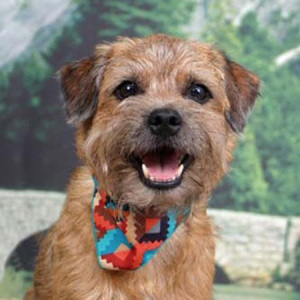
Characteristics
Learn About the Border Terrier
Description
The Border Terrier is a small, medium boned sturdy dog. The shoulders and body are narrow. The space between the eyes is relatively wide. The muzzle is short and usually dark, with a slight moderately broad stop. The nose is black. The teeth are strong with a scissors bite. The small ears are V-shaped, set on the side of the head, dropping forward close to the cheeks and are usually dark in color. The medium sized eyes are dark hazel in color. The front legs are straight and not too heavy. The medium sized tail is thicker at the base and tapers. Border Terriers have a short, dense, wiry, double coat that comes in red, grizzle and tan, blue and tan, or wheaten. There may be a small amount of white on the chest. A dark muzzle is desired in the show ring.
Short History of the Border Terrier
The Border Terrier originates in, and takes its name from the Scottish borders. Their original purpose was to bolt foxes which had gone to ground. They were also used to kill rodents, but they have been used to hunt otters and badgers too.
The first Kennel Club Border Terrier ever registered was The Moss Trooper, a dog sired by Jacob Robson’s Chip in 1912 and registered in the Kennel Club’s Any Other Variety listing in 1913. The Border Terrier was rejected for formal Kennel Club recognition in 1914, but won its slot in 1920, with the first standard being written by Jacob Robson and John Dodd. Jasper Dodd was made first President of the Club.
Temperament
The Border Terrier is an alert, bold little hunter. Very agile they are willing to squeeze through a narrow space to capture any quarry that may be on the other side. Lively, they enjoy playing with children. Affectionate, mild-mannered aiming to please their owners making them easy to train. This sturdy, scruffy, little terrier is a good watchdog, and may bark, but is not aggressive. Be sure to socialize them well. Puppies should be made accustomed to loud noises while they are still young to avoid excessive timidity. Puppies and adolescent Border Terriers are very active, but will mellow as an adult provided they get plenty of exercise. Border Terriers like to dig. Additional reinforcements along the bottom of fences is a good idea. Good with family cats if socialized with them, however this hunting terrier has strong instincts and should not be trusted with non-canine pets such as hamsters, guinea pigs, rabbits, and birds. Be sure you are always your dogs firm, confident, consistent pack leader, to avoid Small Dog Syndrome, and separation anxiety.
Caring for Your Border Terrier
General Health
Borders are a generally hardy breed, though there are certain genetic health problems associated with them, including:
- Hip dysplasia
- Perthes disease
- Various heart defects
- Juvenile cataracts
- Progressive retinal atrophy
- Seizures
Canine Epileptoid Cramping Syndrome (CECS)
Due to their instinct to kill and consume smaller animals, Border Terriers often destroy things; however, not all border terriers will destroy live animals and sometimes they eat toys that are insufficiently robust. Indigestion resulting from eating a toy can cause the appearance of illness. Typical symptoms include lethargy, unwillingness to play, a generally ‘unhappy’ appearance, lack of reaction to affection, and inability or unwillingness to sleep. These symptoms are generally very noticeable, however, they are also present just prior to Border Terrier bitches being on heat.
Grooming & Bathing
The durable, wiry coat needs to be brushed weekly and professionally groomed twice a year. The object is a completely natural look. The Border Terrier sheds little to no hair and is good for allergy sufferers. Bathe only when necessary.
Exercise & Training
The Border Terrier will do okay in an apartment if it is sufficiently exercised. They are moderately inactive indoors and a small yard is sufficient. Border Terriers were bred to hunt and have great vitality and stamina. They need plenty of exercise, which includes a long daily walk.

